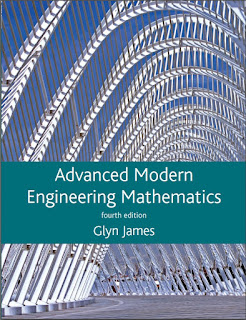1. The Inverse of a Nonsingular Matrix It is well known that every nonsingular matrix A has a unique inverse, ?1 denoted by A , such that ?1 ?1 AA = A A =I, (1) where I is the identity matrix. Of the numerous properties of the inverse matrix, we mention a few. Thus, ?1 ?1 (A ) = A, T ?1 ?1 T (A ) =(A ) , ? ?1 ?1 ? (A ) =(A ) , ?1 ?1 ?1 (AB) = B A , T ? where A and A , respectively, denote the transpose and conjugate tra- pose of A. It will be recalled that a real or complex number ? is called an eigenvalue of a square matrix A, and a nonzero vector x is called an eigenvector of A corresponding to ?,if Ax = ?x. ?1 Another property of the inverse A is that its eigenvalues are the recip- cals of those of A. 2. Generalized Inverses of Matrices A matrix has an inverse only if it is square, and even then only if it is nonsingular or, in other words, if its columns (or rows) are linearly in- pendent. In recent years needs have been felt in numerous areas of applied mathematics for some kind of partial inverse of a matrix that is singular or even rectangular.
Generalized Inverses Theory and Applications Free Download
April 20, 2022

You may also like
APPLIED MATHEMATICS
Boundary Value Problems, Integral Equations and Related Problems by Liang fook Lye PDF
October 10, 2023
In this volume, we report new results about various boundary value problems for partial differential equations and functional equations, theory and methods of...
APPLIED MATHEMATICS
Solution Manual Advanced Modern Engineering Mathematics, 4th Edition by Glyn James PDF
October 10, 2023
This market-leading text is known for its comprehensive coverage, careful and correct mathematics, outstanding exercises, and self contained subject matter...
APPLIED MATHEMATICS
Advanced Modern Engineering Mathematics, 4th Edition by Glyn James PDF
October 10, 2023
This market-leading text is known for its comprehensive coverage, careful and correct mathematics, outstanding exercises, and self contained subject matter...
Recent Posts
- Algebra 3 Homological Algebra and Its Applications by Ramji Lal PDF
- Heat Transfer Physics 2nd Edition By Massoud Kaviany PDF
- Lavin’s Radiography for Veterinary Technicians, 6th Edition by Marg Brown PDF
- Principles of Physics, 10th Edition by David Halliday PDF
- The Dog Behavior Problem Solver by Teoti Anderson PDF



Add Comment